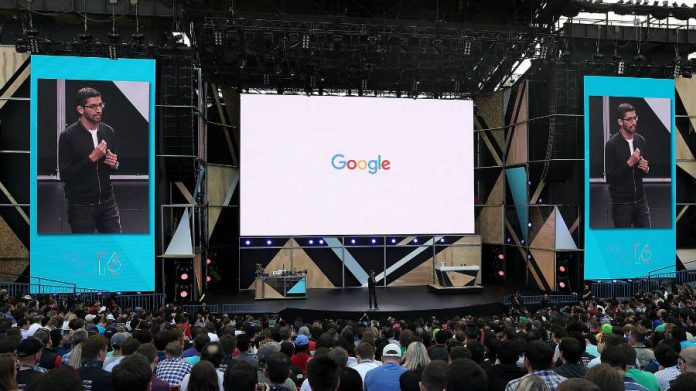
On Wednesday, Google CEO Sundar Pichai took the stage at the Google I/O 2017 to announce several new services and upcoming features on Google’s apps and platforms. Android, Google Assistant, Google Home, Google Daydream and more were among the top highlights.
The three-day developer conference started strong on Wednesday at Googleplex’s Shoreline Amphitheater in Mountain View, California. Besides software and hardware news, the tech giant delved into search engine territory introducing the Google for Jobs platform.
Google executives covered much ground in the opening keynote, which lasted over two and a half hours in total. Here is a breakdown of some highlights and announcements made today, as well as some new additions coming to Google’s products.
Google Assistant gets smarter and is now on iOS
Just like last year, Google Assistant stole most of the spotlight at I/O 2017, especially now that the tech giant wants to coat its entire ecosystem with a machine learning layer.
The company announced it is opening up the Assistant with a new SDK available for third-party developers in both Android and iOS, which will let them build apps or add integration with Google’s voice interface.
Google Assistant is also on the iPhone starting today, although it cannot be set as the default AI to dethrone Siri on iOS. It will support Apple’s native Mail app, though, which is great considering Gmail also got a nice update of its own.
Google Lens, Google Home, and Gmail: more AI in more places
I/O 2017 served as a stage to introduce Google Lens, a new smart camera software that can detect and interact with elements in sight thanks to its integration with Google Assistant.
The computer vision application will recognize elements like buildings, addresses, landmarks, flowers, animals, and more, and the Assistant will offer you useful functions like placing orders, saving contacts and dates, and show you more information about the object in the frame.
Further down the road of visual support for artificial intelligence interfaces, Google Home is adding a new optical response feature that is compatible with Android devices, Chromecast, and smart TVs. For example, asking Home for a location can now prompt Google Maps to open on your phone or your TV screen.
Google Home is also catching up with Amazon’s latest features, adding hands-free calls as well to landline and mobile numbers for free. It is trying to stay ahead with proactive assistance support, which makes useful suggestions to make your life easier in advance, like letting you know of traffic before you leave for work.
Gmail now supports smart replies through Google Assistant’s AI capabilities, which types up instant responses for everyday situations. It also supports autofill, which Google is bringing to its entire array of services outside Google Chrome.
Android O: what we know so far
There is no official dessert name for the latest version of Google’s mobile OS, but Android O is now available for download in beta. It will reportedly launch later this summer, and it’s bringing exciting features like picture-in-picture support and enhanced performance and stability through software.
Android O’s picture-in-picture function was demonstrated with a YouTube video playing in the corner as users launched other apps and returned to the home screen. This feature is not limited to videos, and it may be able to run games and other apps as well.
Notification Dots are also a new addition, which is a non-invasive way to let you know there is something new within a particular app. Users can look at the notification in more detail by long-pressing the app icon or just slide down from the top as usual.
Google Vitals will improve battery life and system performance by always tracking applications and Android functions running actively or in the background. For developers, the Play Console Dashboard will display common errors and faults in mobile services for further patching.
Smart Text Selection is coming as well with Android O, and it allows users to select groups of words rather than individually dragging and choosing specific words or entire texts. Android Go, a lightweight version of full-on Android, is also in the works.
Google Daydream is going solo with standalone headsets
Like other virtual reality platforms, Google Daydream is now announcing its independence of smartphones in the form of new standalone headphones. These devices will include all the technology built in, and they won’t need a smartphone to run apps and games.
Since Google seems more and more committed to launching VR and AR experiences for all available platforms, the company is also introducing a Visual Positioning Service (VPS) to help developers build applications that interact with the real world.
These headsets are coming soon from partners like Lenovo and HTC, while the tech inside comes from Qualcomm. They use some Tango-based technology called WorldSense to track virtual spaces, although Google announced nothing about the AR OS. Daydream as an app, though, is launching soon on the Samsung Galaxy S8.
Source: TechCrunch










